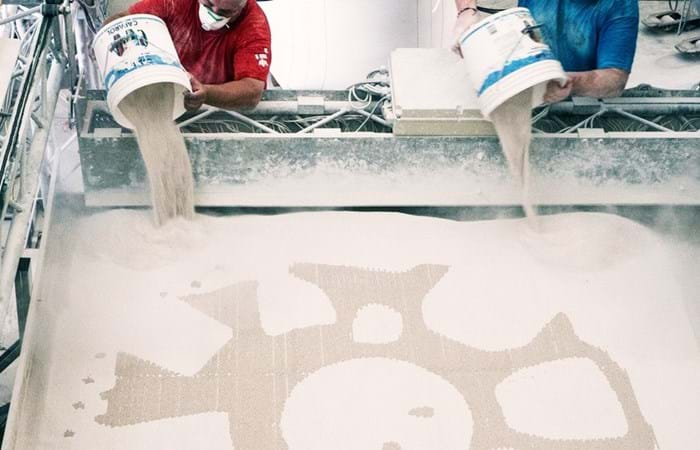Boskalis will create and install six artificial reef modules at the Larvotto reserve in Monaco in 2016, as part of a 3D reef pilot project with Prince Albert II of Monaco’s foundation and the Monaco Larvotto Reserve. The reefs, consisting of sand, will be constructed using a 3D printer. They will be used to improve the ecology and the quality of the seawater at the reserve.
Challenge
The pilot project is being supervised by an international team of marine scientists who have researched topics including the foundations and reef geometry best suited to the development of marine life in the Larvotto reserve. All characteristics are to be incorporated into a single 3D design. Boskalis is coordinating the design and production, and will also be responsible for transporting the reefs to Monaco and installing them.
The installation will be followed by extensive monitoring in order to compare the ecological development of the printed units with more traditional artificial reef units within the reserve.
All parties involved view this as a unique opportunity to contribute to a new vision on artificial reef development. If the pilot is successful, it could make an important contribution to boosting biodiversity and building or restoring ecosystems around the world.
Solution
Dolomite sand in combination with a marine-safe binding agent will be used to make the artificial reef units. Six reef units will be printed in Italy, using a D-Shape printer. Each unit will have an outer dimension of 2 meters in diameter and 1 meter in height, and at a glance resembles a mushroom. Each unit will weigh approximately 2.5 tons when dry.
The reef units will then be transported by truck from Italy to the loading port, Port Hercules in Monaco, and installed by a professional dive team, well experienced in artificial reef installation at the Larvotto Reserve.
The dive team will buoy the units, which are resting in their steel transport cage, using balloons. Then the units will be towed by boat to their final locations, where the balloons will be deflated to lower the units gently to the seabed. Once safely placed, a team of divers will remove the protective transport cages.
